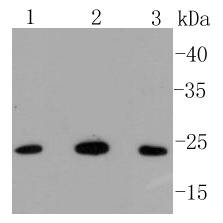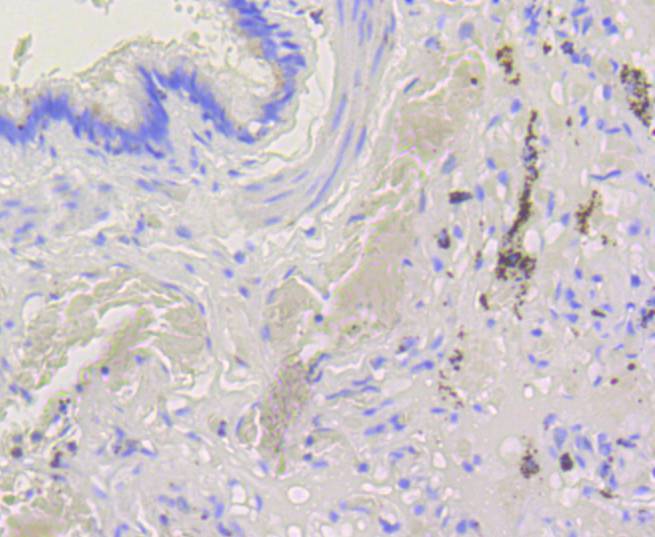Product Detail
Product NameBak Rabbit mAb
Clone No.SU32-07
Host SpeciesRecombinant Rabbit
Clonality Monoclonal
PurificationProA affinity purified
ApplicationsWB, ICC/IF, IHC, IP, FC
Species ReactivityHu
Immunogen Descrecombinant protein
ConjugateUnconjugated
Other NamesApoptosis regulator BAK antibody
BAK antibody
BAK like antibody
Bak NT antibody
BAK_HUMAN antibody
Bak1 antibody
Bcl 2 homologous antagonist/killer antibody
Bcl 2 like 7 protein antibody
Bcl-2 homologous antagonist/killer antibody
Bcl-2-like protein 7 antibody
BCL2 antagonist/killer 1 antibody
Bcl2 like 7 Protein antibody
Bcl2-L-7 antibody
BCL2L7 antibody
CDN1 antibody
Cell death inhibitor 1 antibody
MGC117255 antibody
MGC3887 antibody
NBak antibody
Pro apoptotic protein BAK antibody
Accession NoSwiss-Prot#:Q16611
Uniprot
Q16611
Gene ID
578;
Calculated MW23 kDa
Formulation1*TBS (pH7.4), 1%BSA, 40%Glycerol. Preservative: 0.05% Sodium Azide.
StorageStore at -20˚C
Application Details
WB: 1:1,000-1:2,000
IHC: 1:50-1:200
ICC: 1:50-1:200
FC: 1:50-1:100
Western blot analysis of Bak on different lysates using anti-Bak antibody at 1/1,000 dilution. Positive control:
Lane 1: Hela
Lane 2: Human skeletal muscle
Lane 3: Ags
Immunohistochemical analysis of paraffin-embedded human lung tissue using anti-Bak antibody. Counter stained with hematoxylin.
Immunohistochemical analysis of paraffin-embedded mouse lung tissue using anti-Bak antibody. Counter stained with hematoxylin.
ICC staining Bak in CRC cells (green). The nuclear counter stain is DAPI (blue). Cells were fixed in paraformaldehyde, permeabilised with 0.25% Triton X100/PBS.
Flow cytometric analysis of NIH/3T3 cells with Bak antibody at 1/50 dilution (blue) compared with an unlabelled control (cells without incubation with primary antibody; red). Alexa Fluor 488-conjugated goat anti rabbit IgG was used as the secondary antibody.
The Bcl-2 family of proteins is characterized by its ability to modulate cell death (apoptosis) under a broad range of physiologic conditions. Bcl-2 and several related proteins function to inhibit apoptosis, while other members of the Bcl-2 family, such as Bax, accelerate death under various conditions. One member of the Bcl-2 family, designated Bak, functions primarily to enhance apoptotic cell death following appropriate activating signals and counteracts the protection from apoptosis provided by Bcl-2. Expression of Bak is widespread in a broad range of cells, including various long-lived, terminally differentiated cell types, suggesting that its cell-death-inducing activity is broadly distributed and that the regulation of inhibitors of apoptosis may represent an important determinant of tissue-specific modulation of apoptosis.
If you have published an article using product 48813, please notify us so that we can cite your literature.







 Yes
Yes



